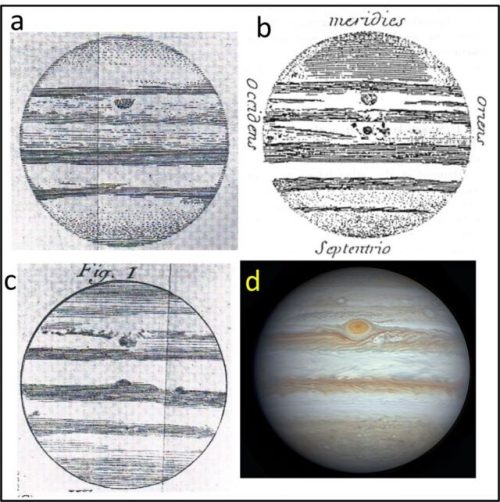The Great Red Spot controversy
Pharyngula 2024-06-26
Apparently, Jupiter’s red spot may be transient and repetitive, coming and going.
Sánchez-Lavega et al. concluded that the current Red Spot is probably not the same as that observed by Cassini and others in the 17th century. They argue that the Permanent Spot had faded by the start of the 18th century, and a new spot formed in the 19th century—the one we observe today, making it more than 190 years old.
Others remain unconvinced of that conclusion, such as astronomer Scott Bolton of the Southwest Research Institute in Texas. “What I think we may be seeing is not so much that the storm went away and then a new one came in almost the same place,” he told New Scientist. “It would be a very big coincidence to have it occur at the same exact latitude, or even a similar latitude. It could be that what we’re really watching is the evolution of the storm.”

Comparison between the Permanent Spot and the current Great Red Spot. (a) December 1690. (b) January 1691. (c) January 19, 1672. (d) August 10, 2023.
It would be such a bummer to plan a vacation to Jupiter and have a major tourist attraction evaporate, so NASA better get right on this mystery and give me a firm schedule for Red Spot fluctuations.